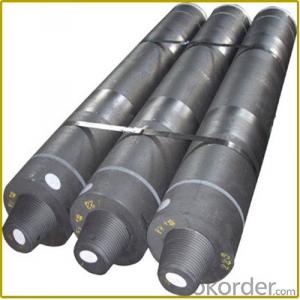Graphite electrodes, the unsung heroes of the steelmaking process, are the heart of the electric arc furnace (EAF). These cylindrical wonders are made from petroleum coke and coal tar pitch, and they play a crucial role in melting scrap metal to produce new steel. But what if I told you that there’s so much more to these graphite electrodes than meets the eye? Let’s dive into the fascinating world of graphite electrode technology and explore how it’s advancing to make steelmaking more efficient, sustainable, and, dare I say, exciting!
First things first, the life of a graphite electrode is not an easy one. They face extreme heat, mechanical stress, and chemical reactions during the steelmaking process. Over time, this takes a toll on their performance and lifespan. But fear not, because the innovators in the field are constantly working to improve their resilience and durability. One such innovation is the development of UHP (Ultra-High-Power) and HP (High-Power) graphite electrodes, which are designed to withstand the harsh conditions of the EAF for longer periods, reducing the need for frequent replacements and minimizing production downtime.
Now, let’s talk about the raw materials. The quality of petroleum coke and coal tar pitch is paramount to the performance of graphite electrodes. Advances in purification and processing techniques have led to the production of higher-quality raw materials, which in turn, has resulted in better-performing electrodes. This is a game-changer because it means that steelmakers can now produce more steel with fewer resources, reducing costs and environmental impact.
But it’s not just about making them stronger. The graphite electrode industry is also focusing on making them smarter. With the advent of Industry 4.0 and the integration of IoT (Internet of Things) technologies, graphite electrodes can now be monitored in real-time, allowing for predictive maintenance and optimization of the steelmaking process. This is a win-win situation for both the steel industry and the environment.
Another exciting development is the research into alternative materials for graphite electrodes. Scientists are exploring the use of bio-based materials and recycled carbon sources to create more sustainable electrodes. This could potentially reduce the carbon footprint of the steelmaking process and contribute to a circular economy.
And let’s not forget about the impact of graphite electrodes on the environment. The production process, while essential, does have its environmental concerns. Efforts are being made to minimize the ecological footprint by improving energy efficiency, reducing emissions, and adopting cleaner production methods.
In the world of steelmaking, every little bit counts, and the advancements in graphite electrode technology are no exception. By enhancing their performance, durability, and sustainability, we’re not just making steelmaking more efficient; we’re also contributing to a greener future for our planet.
So, the next time you see a graphite electrode, remember that it’s more than just a piece of carbon-based material. It’s a symbol of innovation, resilience, and our collective effort to create a better tomorrow. Let’s continue to push the boundaries of what’s possible and advance graphite electrode technology for the benefit of all.

